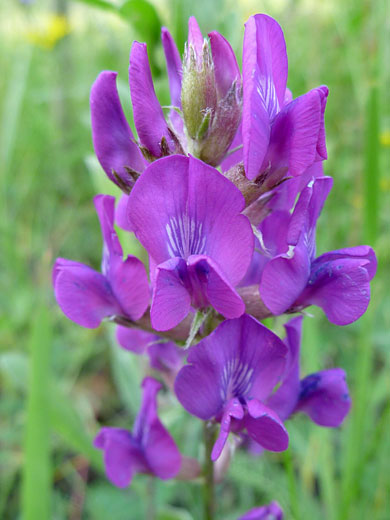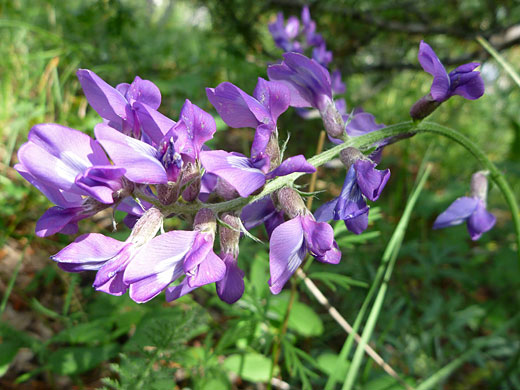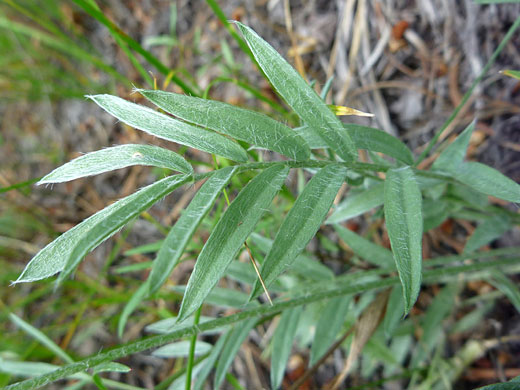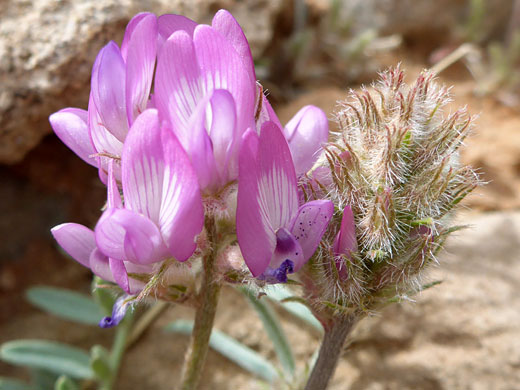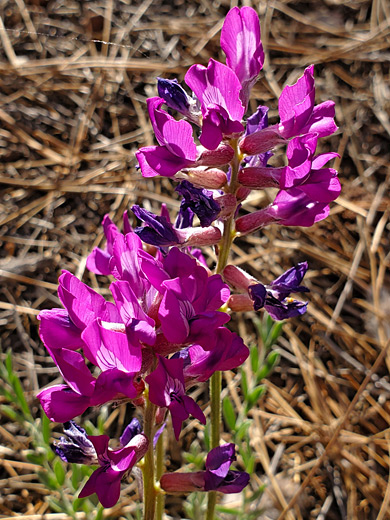Common names:
Purple locoweed, Colorado locoweed
Family:
Scientific name:
Oxytropis lambertii
Main flower color:
Range:
The Four Corners, Rocky Mountain and Great Plains states
Height:
Between 4 and 16 inches
Habitat:
Grassland, hillsides, roadsides, forest openings
Leaves:
Pinnately compound, up to 12 inches long; 7 to 19 leaflets linear to oblong, up to 1.5 inches in length
Season:
March to August
Leaves of oxytropis lambertii are divided into between 7 and 19 alternately arranged leaflets, with pointed tips, entire edges and a covering of long, silvery-white hairs, which are attached to the leaf surface at their midpoint. The unbranched, vertical, leafless stalks hold between 6 and 24 flowers, colored pinkish-purple, becoming bluish as they start to wither. Flowers are borne well above the foliage, which grows near ground level. The outside of the calyx, and the stalk, are also hairy. The banner petal is the largest, bent upwards and curved back from the center, which is lighter in color than the edge. Flowers are about one inch in length.
This is the most common oxytropis species in the central US, and is particularly toxic to animals. There are three varieties; var articulata and var lambertii of the Great Plains states, and var bigelovii of the Four Corners states (extending into Wyoming). This latter also exists in a desert form, blooming earlier in the season, and characterised by compact clusters on leafless stems, extending only a little way above the leaves.
This is the most common oxytropis species in the central US, and is particularly toxic to animals. There are three varieties; var articulata and var lambertii of the Great Plains states, and var bigelovii of the Four Corners states (extending into Wyoming). This latter also exists in a desert form, blooming earlier in the season, and characterised by compact clusters on leafless stems, extending only a little way above the leaves.
All Contents © Copyright The American Southwest | Comments and Questions | Contribute | Site Map


